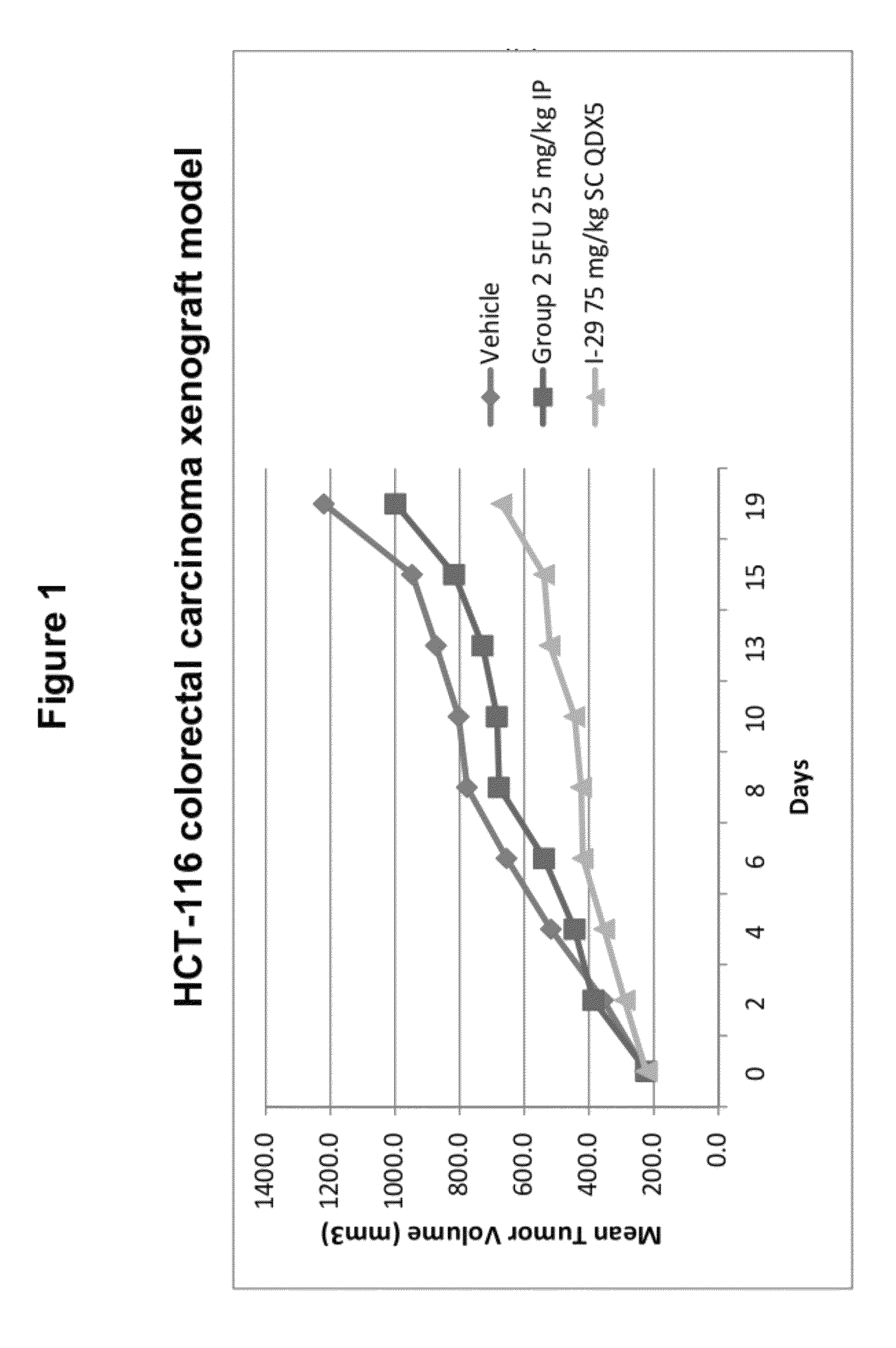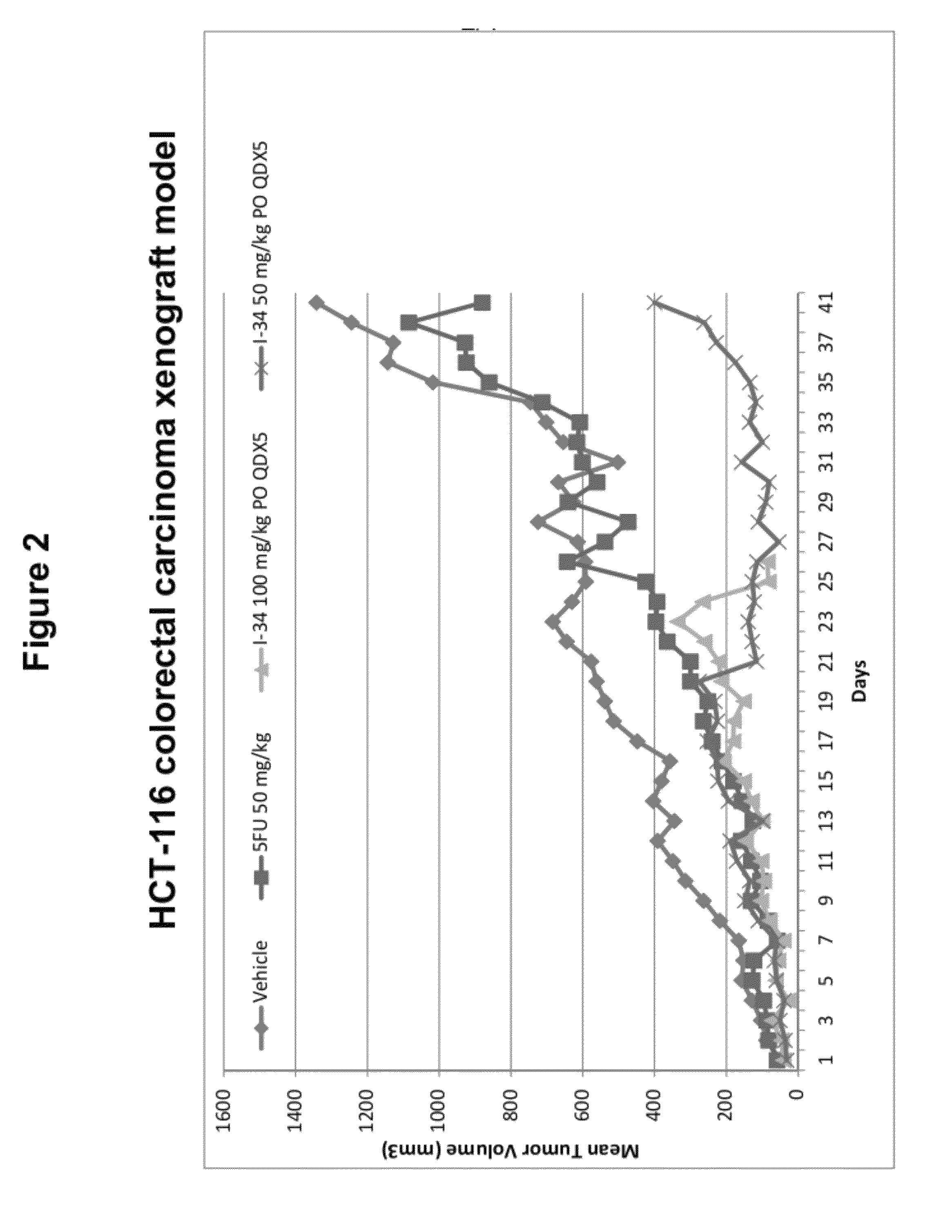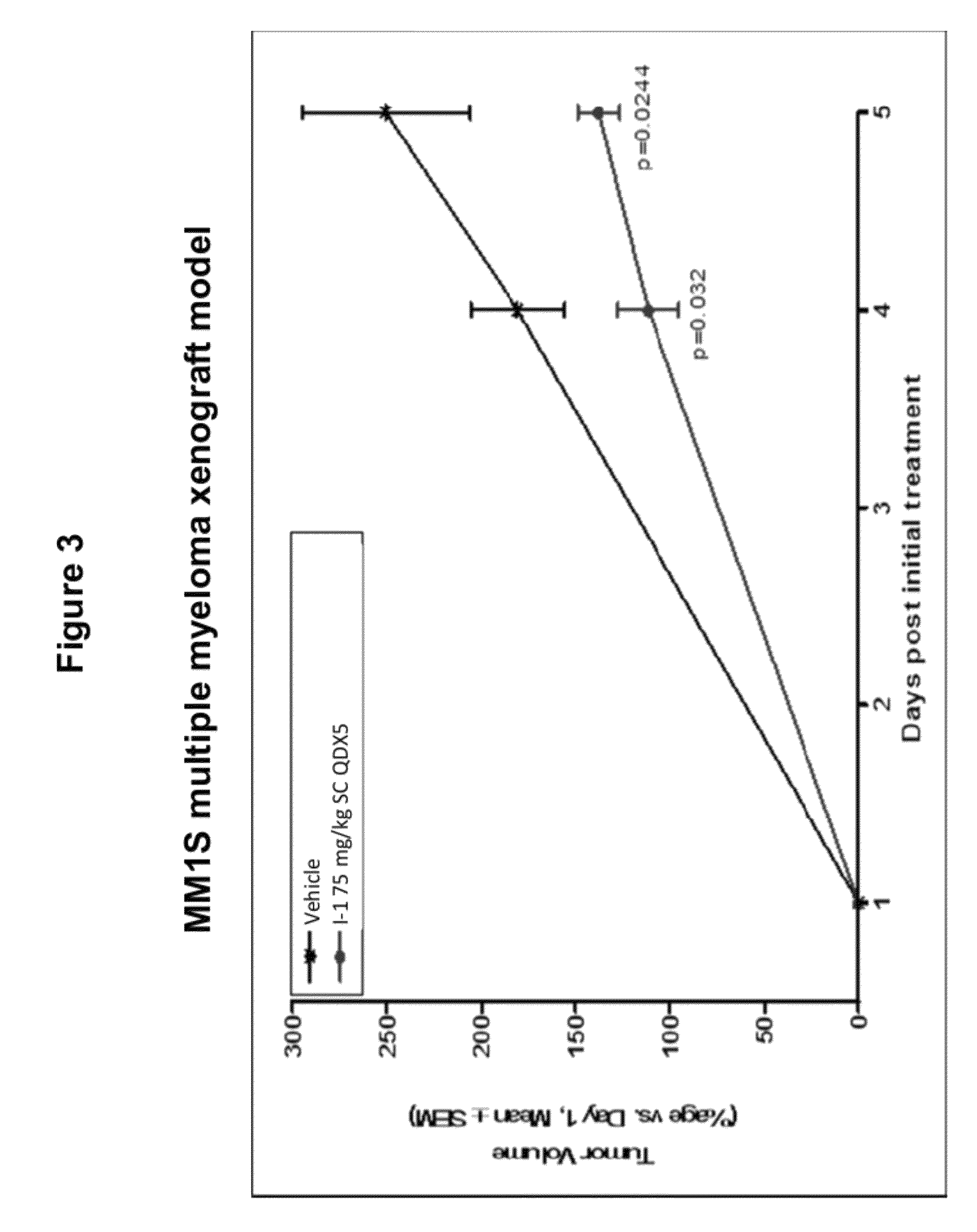Olefin containing nuclear transport modulators and uses thereof
a technology of transport modulator and olefin, which is applied in the direction of biocide, cardiovascular disorder, drug composition, etc., can solve the problems of loss of normal growth regulation, loss of suppressor function, poor clinical outcomes of these tumor types
- Summary
- Abstract
- Description
- Claims
- Application Information
AI Technical Summary
Benefits of technology
Problems solved by technology
Method used
Image
Examples
example 1
Synthesis of (Z)-2-(2-(3-(3-chlorophenyl)-1H-1,2,4-triazol-1-yl)vinyl)-1,3,4-oxadiazole (I-26)
[0320]
Synthesis of (Z)-3-(3-(3-chlorophenyl)-1H-1,2,4-triazol-1-yl)acrylic acid
[0321]
[0322]In 3-neck 100 mL RBF, (Z)-isopropyl 3-(3-(3-chlorophenyl)-1H-1,2,4-triazol-1-yl)acrylate (1.0 g, 1 eq.) was mixed with THF-Water (1:1) (20 mL, 20 Vol.) and LiOH (0.288 g, 2.0 eq.) was added. The reaction mixture was stirred at RT for 2-3 h. Reaction completion was monitored on TLC using neat ethyl acetate as mobile phase. Reaction mixture was quenched into the ice-water slurry (50 mL) and acidified with approximately 5 N HCl to 4 PH. Compound was extracted in the ethylacetate (50 mL×3) and organic layer was washed with brine solution (50 mL×3) followed by drying using anhydrous sodium sulphate. Organic layer was concentrated under reduced pressure to afford 0.7 g of pure (Z)-3-(3-(3-chlorophenyl)-1H-1,2,4-triazol-1-yl)acrylic acid. Yield (81.8%). LC / MS: 250.0
Synthesis of (Z)-3-(3-(3-chlorophenyl)-1H-1...
example 2
Synthesis of (E)-2-(2-(3-(3-chlorophenyl)-1H-1,2,4-triazol-1-yl)vinyl)-1,3,4-oxadiazole (I-27)
[0329]
Synthesis of (Z)-3-(3-(3-chlorophenyl)-1H-1,2,4-triazol-1-yl)acrylic (isobutyl carbonic) anhydride
[0330]
[0331]In a 3-neck 25 mL round-bottomed flask, (Z)-3-(3-(3-chlorophenyl)-1H-1,2,4-triazol-1-yl)acrylic acid (0.10 g, 1.0 eq.) was dissolved in of THF (16 mL) at 0° C. under N2 atmosphere and 4-methyl morpholine (0.056 g, 1.4 eq.) was added followed by Isobutylchloroformate (0.085 g, 1.5 eq.). Reaction mixture was stirred at 0° C. for 1 h. The progress of the reaction was monitored by TLC using MeOH: dichloromethane (1.5:8.5) as mobile phase. The reaction mass was filtered and filtrate was used without any further purification.
Synthesis of (Z)-3-(3-(3-chlorophenyl)-1H-1,2,4-triazol-1-yl)acrylohydrazide
[0332]
[0333]In a 3-neck 25 mL round-bottomed flask, (Z)-3-(3-(3-chlorophenyl)-1H-1,2,4-triazol-1-yl)acrylic (isobutyl carbonic) anhydride (0.140 g, 1.0 eq.) (mother liquor of previous st...
example 3
Synthesis of (Z)-2-(2-(3-(3-chloro-5-isopropoxyphenyl)-1H-1,2,4-triazol-1-yl)vinyl)-1,3,4-oxadiazole (I-28)
[0336]
Synthesis of (Z)-3-(3-(3-chloro-5-isopropoxyphenyl)-1H-1,2,4-triazol-1-yl)acrylic (isobutyl carbonic) anhydride
[0337]
[0338]In a 25-mL, 3N RBF equipped with nitrogen inlet, and a rubber septum, (Z)-3-(3-(3-chloro-5-isopropoxyphenyl)-1H-1,2,4-triazol-1-yl)acrylic acid (0.4 g, 1.0 eq.) was dissolved in THF (10 mL). The reaction mixture was cooled at 0° C. To this reaction mixture Isobutyl chloroformate (0.284 g, 1.6 eq) and 4-methylmorpholine (0.185 g, 1.4 eq) was added. The reaction mixture was maintained at 0° C. for 1 h. The progress of the reaction was followed by TLC analysis on silica gel with 10% MeOH-DCM as mobile phase. SM Rf=0.20 and Product Rf=0.6. Reaction mixture was filtered through celite bed. The filtrate was used for next step without any work up and purification.
Synthesis of (Z)-3-(3-(3-chloro-5-isopropoxyphenyl)-1H-1,2,4-triazol-1-yl)acrylohydrazide
[0339]
[...
PUM
| Property | Measurement | Unit |
|---|---|---|
| volume | aaaaa | aaaaa |
| volume | aaaaa | aaaaa |
| volume | aaaaa | aaaaa |
Abstract
Description
Claims
Application Information
 Login to View More
Login to View More - R&D
- Intellectual Property
- Life Sciences
- Materials
- Tech Scout
- Unparalleled Data Quality
- Higher Quality Content
- 60% Fewer Hallucinations
Browse by: Latest US Patents, China's latest patents, Technical Efficacy Thesaurus, Application Domain, Technology Topic, Popular Technical Reports.
© 2025 PatSnap. All rights reserved.Legal|Privacy policy|Modern Slavery Act Transparency Statement|Sitemap|About US| Contact US: help@patsnap.com



